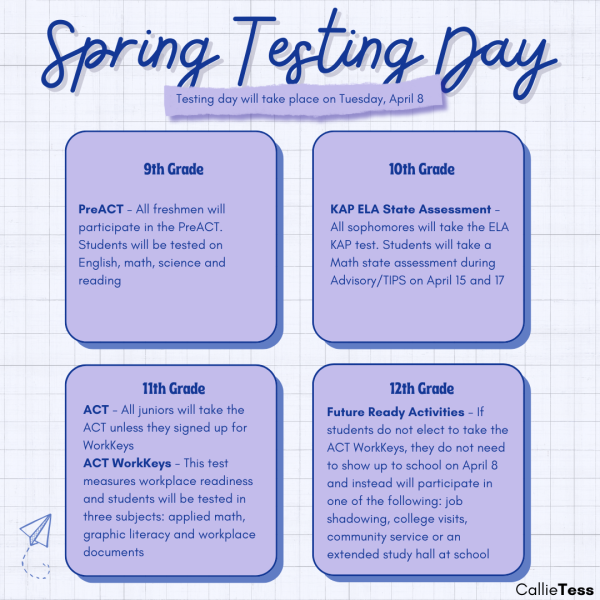Mattel announces new line of Barbies that includes different body types and skin tones
Senior Jasmine Moore cruised down the toy aisle with her mom and 4-year-old sister glancing at the different dolls the store offered. Growing up, Moore said she never questioned the appearance of a doll; they just were Barbies or Polly Pockets, and they had their look. However, as Moore browsed the growing options of toys to play with, her 4-year-old sister pointed to an African American doll and said, “Look mom, that one’s like me.”
“If she had a doll that wasn’t African American, I don’t think she’d be bothered by it, but I was like that’s pretty cool,” Moore said. ”As a kid, I wouldn’t point that out, so to just hear her say that is awesome to see the recognition.”
The Barbie doll has existed since 1959 and has become well-known for her tall, blonde hair, blue-eyed figurine, and over her 50 years, she’s acquired over 150 careers, from being a teacher to a rock star. However, for nearly three years, Barbie has suffered major declines in sales, mainly caused by the increasing variety of toys and parents’ reprimand of Barbie’s unrealistic image and the message it sent to children.
After prolonged negativity toward the company, Mattel succumbed to altering its iconic look. On Jan. 28, toymaker Mattel announced its new line of Fashionista Barbies that featured seven new skin tones, 22 eye colors, 30 hair colors and three new body shapes: petite, curvy and tall.
“It’s about time; these changes are long overdue,” gifted education teacher Jana Tobin said. “I’m very happy to hear that they have made Barbies that are more representative of real men and women. I think the old Barbie doll perception was, ‘This is what the ideal man and woman would look like,’ and that’s not the way most people look.”
Tobin has a third grade daughter who used to play with Barbies, but she stopped playing with them just this year. Tobin said her daughter simply lost interest, and other toys became more popular among her daughter’s peers.
Although Mattel finally answered a battle feminists have been fighting for years, many critics claim that Mattel’s new line and attempt of inclusion is just a last-ditch effort to bring the company back into competition. Many other toy-makers have already marketed dolls representative of different types of people, and Mattel is coming late in the game. Likewise, critics assert Barbie was known because of her unattainable look, and by changing that look, the company just becomes like any other brand that sells dolls.
However, the critics can’t ignore the daunting connection between young girls who play with Barbies and eating disorders. In a 2006 British study, scientists investigated the relationship of Barbie and self-esteem by exposing young girls to Barbies and comparing their self-esteem from that to their self-esteem after exposure to a more neutral doll. The study proved that the children’s perceptions of themselves were more negative from the Barbies, specifically for those between the ages of 5 and 7 years old.
“We start to compare ourselves against all of the things that we see that we think are beautiful or what we hear other people say are beautiful, and so over time we start thinking this is the only beautiful package,” school psychologist Cathy Kerr said. “That’s where we get into some difficulties with girls trying to be something they’re not or start some of the eating disorders or those kinds of things. We’re trying to be something that we perceive as beautiful, and, really, we’re inundated with that from the time when we’re little for the rest of our lives.”
Barbie’s repugnant impression began early in her life, specifically, in the 1960s, when a new line of “Slumber Party Barbie” was released. The doll came with a set that included a scale that was set at 110 lbs, which is well below that national weight average. Likewise, the scale came with a diet book and a sign that read, “How to lose weight? Don’t eat.”
Through the times, companies have become more sensitive to harming one’s body self-esteem, such as Dove’s campaign for “real beauty.” Likewise, schools have pushed for students to be healthy, rather than just to be skinny. Clubs likes REbeL have emerged to promote more acceptance of each person’s insecurities, and Mattel is sending a similar message.
“I think that adding Barbies that are different sizes, whether it be bigger or shorter or taller or different ethnicities, it just sends out a message that being different is perfectly fine, and it’s good to be different,” junior REbeL member Avery Pollitt said. ”I think that’s really important, so that’s kind of what REbeL is — be confident, be different, be who you are — and then that’s what these Barbies are saying as well.”
Students in REbeL and Diversity Club have made it their goal to create an environment where students are comfortable with who they are and perceptions of an “ideal body” are diminished. Specifically, the two clubs paired up to create Celebrate Southwest Week, in which they led different activities each day in order to advocate for confidence and acceptance. Moore, a member of Diversity Club, said she was happy about Mattel’s announcement of its new line, as it’s a step toward the inclusive attitude the group’s been working toward.
“I think that by having more ethnic dolls, it really increases that diversity and makes it not seem like our world is so segregated,” Moore said. “It’s starting to feel more accepting so people now feel comfortable with who they are in our society. If the companies are accepting, and they’re really putting it out there, then that must mean that other people are beginning to accept it.”
Barbie’s new line isn’t Mattel’s first attempt at inclusion. On Nov. 18, the company released a commercial featuring a boy playing with Barbies for the first time in the company’s history. Although people critiqued the commercial for making the boy seem “stereotypically gay,” the doll sold out fairly quickly, according to CNN Money.
“I think we’re getting more open to that as a society as a whole, and I also think for advertisers you get a lot of attention for that, which I think is interesting,” Kerr said. “It’s like you have a commercial, but you do something different, and then people start commenting on your commercial. Then your commercial gets popular, and then it’s a better commercial.”
Perhaps Mattel’s motivation for change derived from its desire for more selling points, but students are excited about the change. Regardless, students have recognized the need for more acceptance among adolescents, and Pollitt said she views Mattel’s announcement as a step in the right direction.
“We have to start by accepting insecurities, and that’s really difficult, I know, but I feel like it’s just very important for you to accept the way you look,” Pollitt said. “Once you accept who you are, you can really live your life and explore all the different kinds of things without being nervous of the way you look or what you’re going to look like to other people. Also with the Barbies, I think changing the way they look to more realistic will help 50 times more with people being comfortable with who they are, and I think that’s just the most important thing.”












